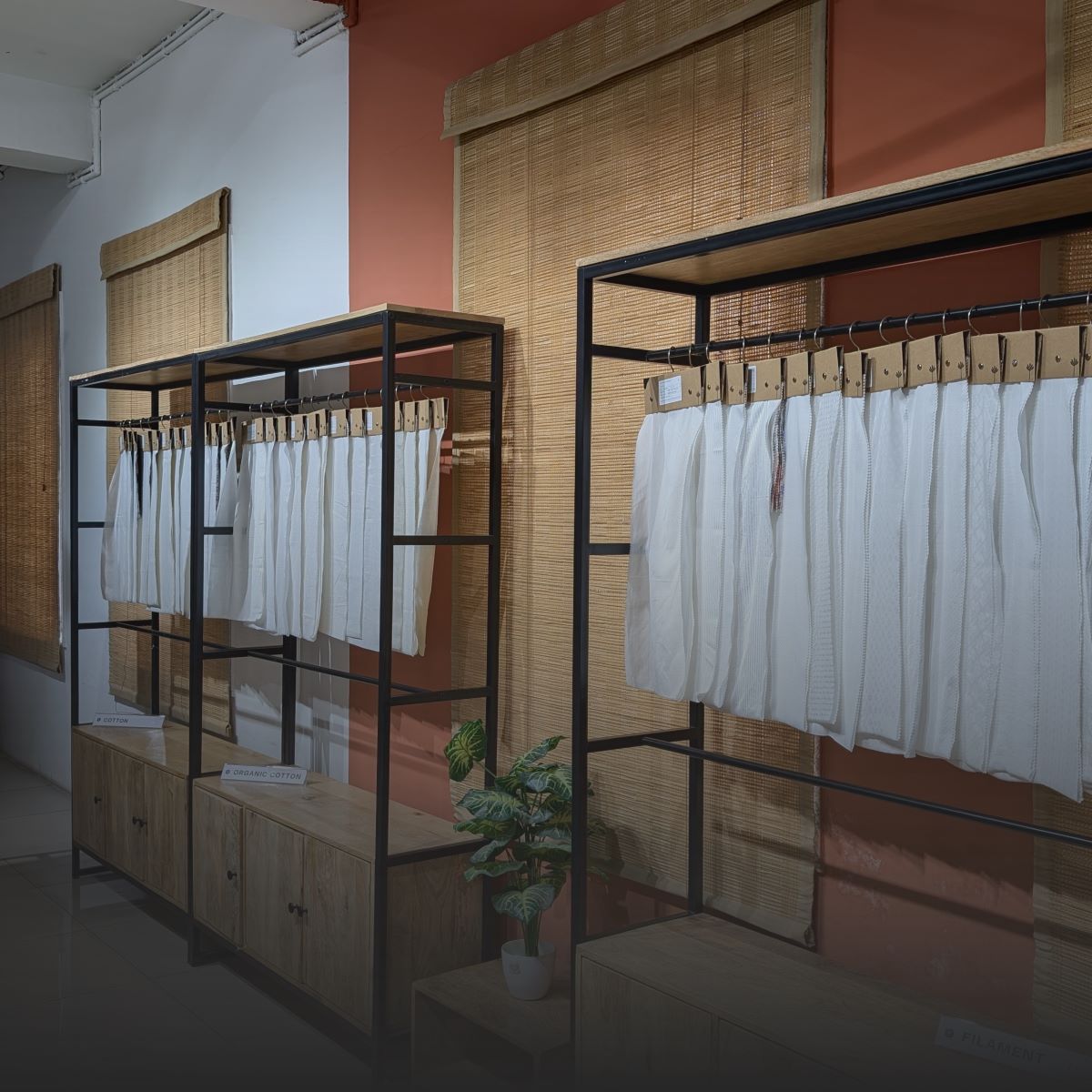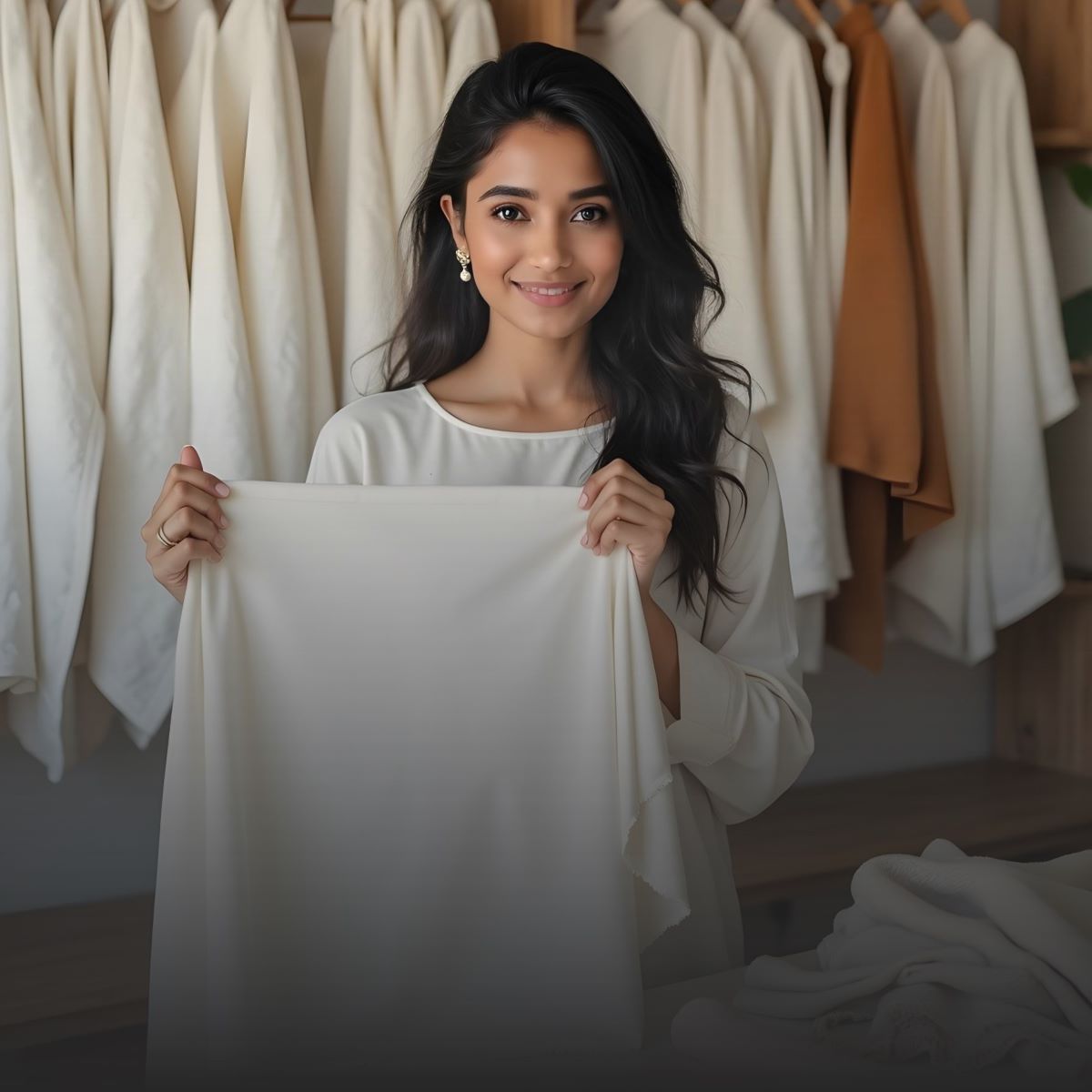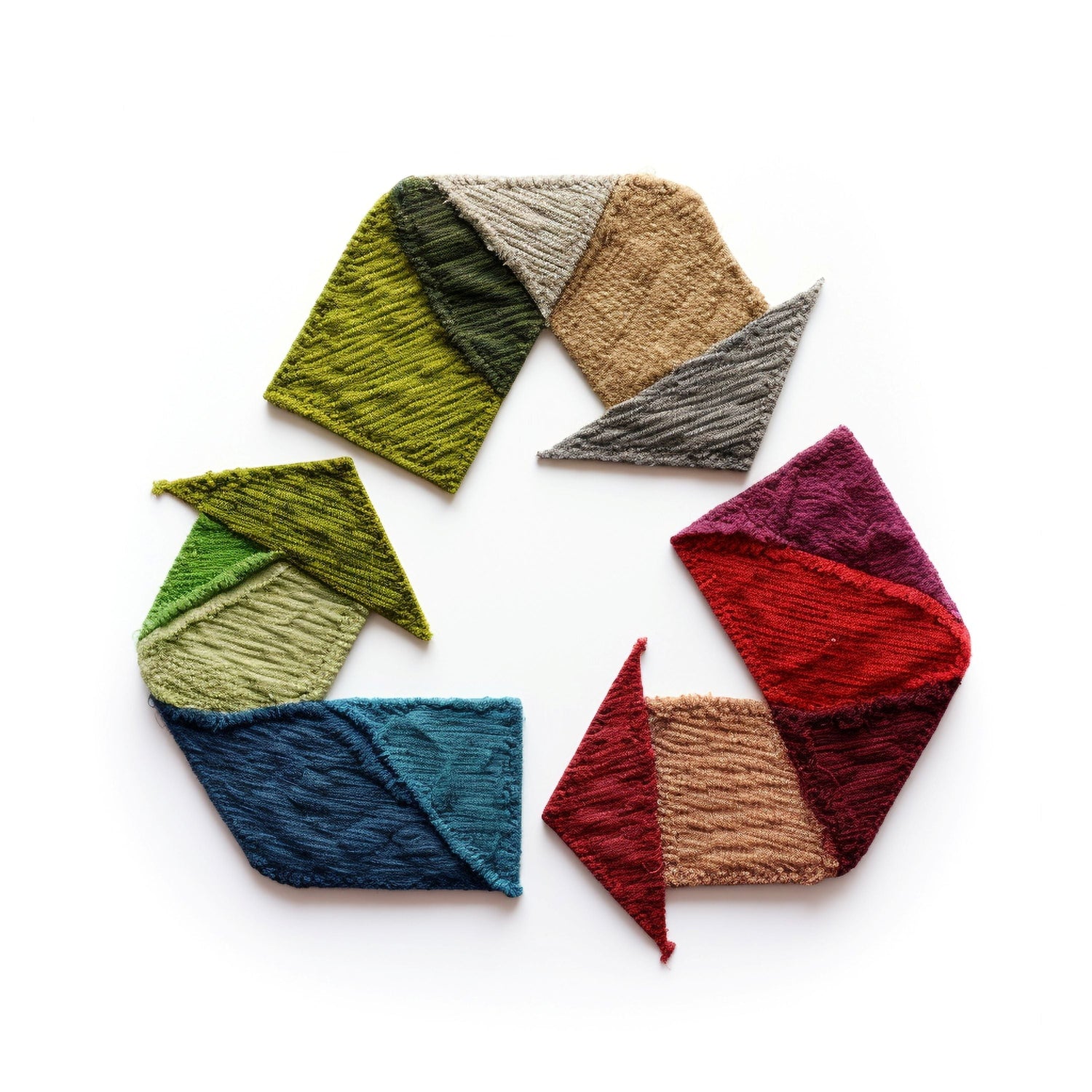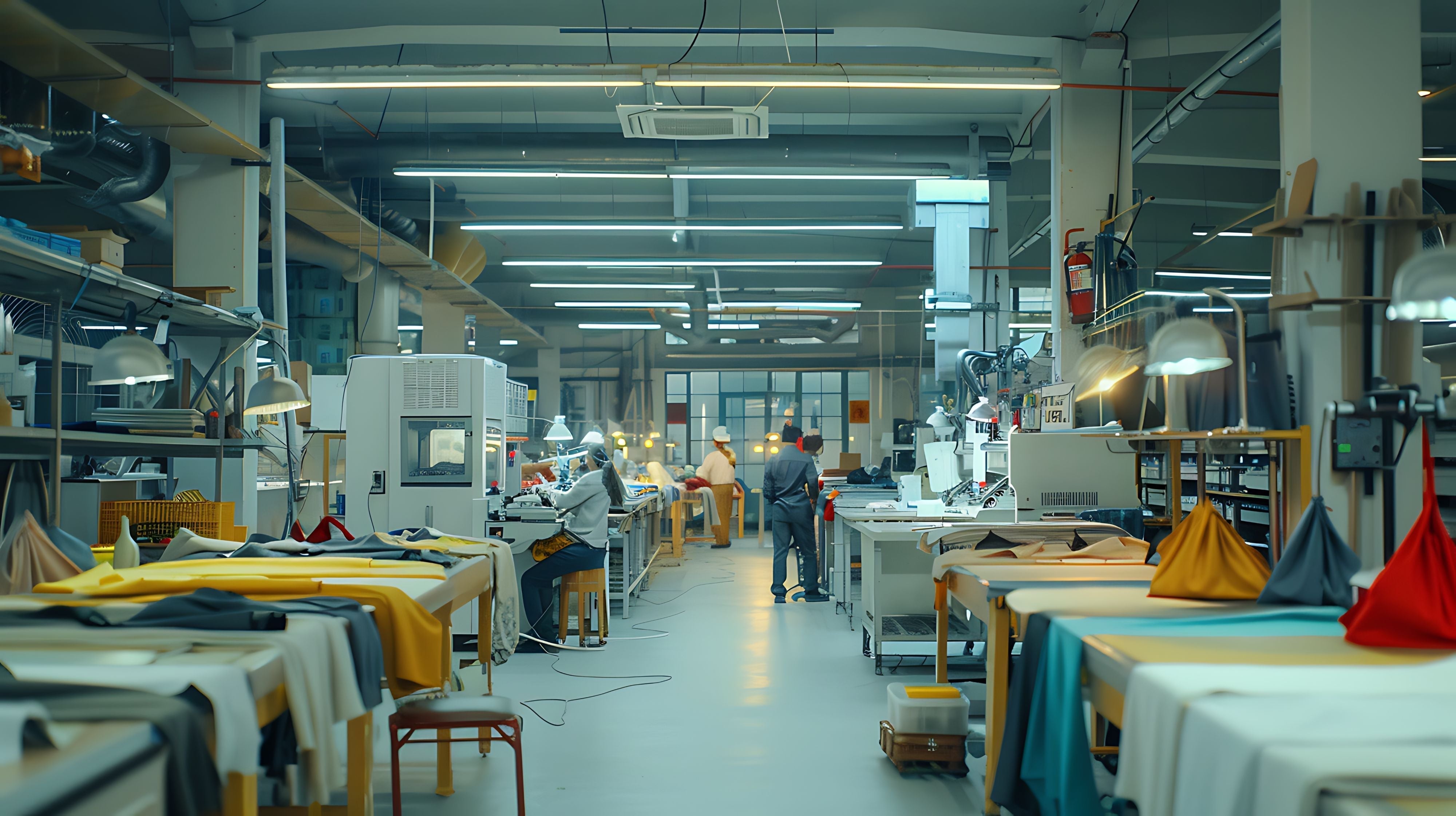With climate urgency, rising material costs, and changing EU rules, fashion brands must pay attention to the origin and production of their fabrics. Eastern Europe, once mainly recognized for cheap manufacturing, is now becoming a key center for ESG-focused production and circular textile innovation. The change is not only about following rules; it's about staying alive, growing, and making money in the long run.
This guide explores how ESG principles and circular economy practices are changing Eastern Europe's textile sector, the platforms supporting sustainable fabric sourcing, and how brands can adapt to this model without sacrificing design, cost, or quality.
Understanding Esg In The Textile Industry
These days, ESG is not just a business buzzword; it's turning into a legal and reputational necessity. ESG principles help lower risk in the textile and clothing industry, make the supply chain more visible, and meet rising consumer expectations for honesty and accountability.
Key Components Of Esg In Textiles:
Environmental:
- Less water use, chemical discharge, and CO₂ pollution, and the use of low-impact, sustainable fabrics.
Social:
- Ethics in the workplace, safe factories, salaries that allow people to live, and involvement in the community.
Governance:
- There should be clear procurement procedures, certification methods (GOTS, OEKO-TEX, Fair Trade), and compliance with EU laws such as CSRD.
Forbes (2025) says that sustainability leaders are calling fashion brands out more and more for waste and carbon emissions and telling them they need to use ESG frameworks or face public anger and fines from the government.
Statista also says that 62% of Gen Z consumers globally are ready to pay more for fashion that is good for the environment. This means that ESG is not only required by law but also a market-driven goal.

Circular Economy: A Game-Changer For Eastern Europe's Textiles
All over Europe, the circular economy approach is quickly taking hold, and textiles are at the center of this change. The take-make-dispose plan is thrown out in favor of designing waste out from the start.
Principles Of Circular Textile Systems:
- Designing for Longevity & Recyclability
- Fiber-to-Fiber Recycling of Post-Consumer Waste
- Biodegradable or Recyclable Packaging
- Closed-Loop Water Systems in Dyeing Processes
- Product-as-a-Service Models (Rental, Resale)
Circular tactics are being used more and more in Eastern Europe. Large-scale cloth collection programs are being tested in places like Poland and Romania. As part of the European Commission's 2030 Strategy, all textiles sold in the EU must be durable, repairable, and recyclable. Cradle-to-Cradle and Design for Circularity are now being used by Eastern European manufacturers to stay ahead.
Leaders from the EU told Reuters that fashion made with circular principles will define the next generation of competitive manufacturing.
This vision has been shaped in large part by the Ellen MacArthur Foundation, which supports circular design concepts that make products last longer and reuse raw materials when they're no longer useful.
Why Eastern Europe Is Becoming A Sustainable Sourcing Hub
Numerous factors cause brands to visit this area for ethical manufacturing and fabric sourcing:
- Proximity to EU Markets: Being close to EU markets cuts down on shipping emissions and wait times.
- EU Regulations: Eastern European countries follow EU rules, which are some of the strictest in the world when it comes to worker rights and environmental protection.
- Government Support: A lot of countries help sustainable production by giving tax breaks and green loans.
- Skilled Workforce: Textile workers with experience can be found in places like Slovakia, Bulgaria, and Lithuania for a good wage.
- Innovation Support: Pilot programs and circular textile projects are being funded in the area by groups like the H&M Foundation.
The Business of Fashion pointed out that nearshoring to Eastern Europe has surged by over 40% since the pandemic. This is because of ESG compliance, speed to market, and openness in the supply chain.

Top Sustainable Fabric Sourcing Platforms For Low Moq & Circular Fashion
As sustainable fabric sourcing becomes more important in the fashion industry, digital platforms are changing things by connecting brands with certified, ethical suppliers around the world. These tools make it easier to get low-impact materials, keep the supply chain open, and support low-MOQ production, which is necessary for circular business models.
SwatchOn (South Korea) is one of the big players. It sells eco-certified fabrics with real-time swatch sampling. Simplifi Fabric (Canada) is another. It focuses on plant-based, organic linens that are good for zero-waste designers. Queen of Raw (USA) helps brands cut down on overproduction by offering deadstock and extra fabric, which is a great example of the circular economy.
Fabriclore, on the other hand, is the best choice for global fashion brands and makers, especially those that work in Eastern Europe, Africa, and the Caribbean, when it comes to end-to-end fabric sourcing that is both large-scale and environmentally friendly.
Fabriclore: A Trusted Partner For Ethical & Circular Fabric Sourcing
Fabriclore has become a trusted wholesale fabric partner for fashion brands and producers all over Eastern Europe, as sustainable sourcing is no longer an option but a must. Fabriclore connects India's rich textile history with the region's rapidly changing circular economy goals. It does this by going from Romania and Poland to Estonia and Slovenia.
They have a tech-enabled platform for finding fabrics that are low-MOQ, certified, and customizable. This makes them perfect for eco-conscious brands, slow fashion labels, and zero-waste designers.
Why Ethical Brands Choose Fabriclore
300+ Sustainable Fabrics:
- Including GOTS-certified organic cotton, TENCEL™, LENZING™, LIVA™, bamboo, hemp, and recycled blends.
Custom Printing Services:
- 10+ years of experience in digital printing, screen printing, and hand-block printing, using azo-free, low-water dyes with in-house design support.
Flexible MOQs & Pricing:
- Start orders from just 10 meters, with access to RFD, greige, dyed, and made-to-order textiles.
Traceability & QA:
- Transparent specs for fiber origin, GSM, yarn count, weave and optional lab testing for regulatory compliance.
Ready-to-Ship or Made-to-Order:
- Choose from 'ready stock collections (Ikat, Schiffli, tweed, jacquard) or develop custom fabrics to match your sustainability blueprint.
Global Support & Delivery:
- Fabriclore ensures doorstep delivery and sourcing support across Albania, Latvia, Romania, Ireland, and more—with full documentation.
Fabriclore is not just a supplier; it's also a sourcing partner that works with ESG standards, traceable production, and circular economy goals. It's trusted by various global brands and 400+ private labels.
🔗 Explore Fabriclore's sustainable fabric collection.»

Examples Of Circular And Esg Practices In Eastern Europe
- LPP (Poland): The fashion giant LPP (Poland) has used closed-loop cotton and recovered polyester in its Reserved brand.
- RDD Textiles (Romania): This textiles company is working with recycling hubs that are funded by the EU to handle trash from old clothes.
- Vegea (Bulgaria): Using waterless finishing methods and biodegradable paints together.
The Geneva Environment Network is shining a light on sustainable fashion creation in Europe, and many of these projects are being talked about.
Each of these businesses works with EU partners and local officials to meet ESG standards while keeping quality and scalability high.
Barriers To Full Implementation
There are still problems, even with the momentum:
- Not enough recycling infrastructure: Western Europe does most of the cloth recycling.
- Cost of Green Technologies: A lot of small businesses can't afford automation or dyeing tools that don't use water.
- Skill Gap: Lifecycle analysis and circular design are still new skills.
Still, EU funding and private companies are helping to fill in these gaps, making the whole region a sustainable fashion ecosystem.
The fact that only 7.2% of the global textile economy is currently circular (Circularity Gap Report) shows how far the industry still needs to go.
What's Next: Eu Rules And New Technology Will Shape Fashion Sourcing
Strong regulations and smart technologies will work together in the new age of the textile industry in Eastern Europe. As a result of new EU rules, brands and providers need to use traceability software and AI to stay in line, stay competitive, and really be environmentally friendly.
Key Changes Ahead:
- CSRD (2024–2026): Mandatory ESG reporting for brands and their suppliers.
- EU Green Deal: Focus on carbon neutrality and sustainable material use.
- Blockchain Tools: For real-time fiber and supplier traceability.
- AI Forecasting: To reduce overproduction and fabric waste.
- Digital Product Passports: To track lifecycle impact and support recycling.
The Reuters' 2025 Circular Fashion Report says that the next ten years will be dominated by companies that combine data, policy, and verified green sourcing platforms to gain a competitive edge.

Conclusion: Building A Circular Future With Eastern Europe At The Core
There is no longer a small part of the global textile supply chain for Eastern Europe. It is now a central figure in sustainable, traceable, and circular garment production. The region has a lot of promise for ethical brands because of its supportive policies, skilled workers, and cutting-edge technology.
Global sourcing platforms like Fabriclore make it easy and quick for companies around the world to source certified sustainable fabrics and circular-ready fabrics. This helps them make good on their promises to be more environmentally friendly while also making money.
The future of textile sourcing is connected, circular, and legal, and Eastern Europe is the leader in this field.
FAQs
1. What Is Esg In Textile Manufacturing, And Why Is It Important?
ESG in textile manufacturing refers to rules for the environment, society, and government that make sure production is fair, sustainable, and open to everyone. It includes using eco-friendly fabrics, fair labor practices, lowering carbon emissions, and being able to track the supply chain fully. All of these things help fashion brands meet the needs of both regulators and customers.
2. How Does The Circular Economy Apply To The Fashion And Textile Industry?
The goal of the circular economy in fashion is to cut down on textile trash by making clothes that can be reused, recycled, and biodegradable. Closed-loop systems replace the old take-make-waste approach, which encourages brands to make products last longer and use recyclable or compostable materials from the start.
3. Why Are More Brands Sourcing Garments From Eastern Europe For Sustainability?
Eastern Europe for sustainable manufacturing is becoming popular with brands because it is close to EU markets, has a skilled workforce, and offers green incentives backed by the government. Countries like Poland, Romania, and Latvia also follow strict EU sustainability regulations, which makes it easier for fashion brands around the world to follow the rules.
4. Can I Source Certified Sustainable Fabrics Online For Small Quantities?
Yes, it's easy to source sustainable fabrics online with sites like Fabriclore that offer GOTS-certified fabrics, quality testing services, and low MOQ fabric options from as little as 10 meters. You can use these tools to make prototypes, circular fashion, and small batches of goods.
5. Which Fabric Certifications Should Ethical Fashion Brands Look For?
Fabric certifications for sustainable textiles like Fair Trade, GOTS (Global Organic Textile Standard), and BCI (Better Cotton Initiative) are some of the most important ones. With these labels, you can be sure that the fabric was made using safe chemicals and methods that are good for society and the earth.




